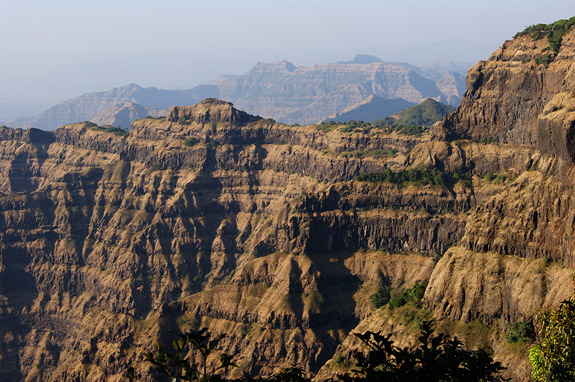
A new geological timeline from Princeton University researchers shows that a series of massive volcanic explosions in India, 66 million years ago, spewed enormous amounts of climate-altering gases into the atmosphere immediately before and during the extinction event that claimed Earth’s non-avian dinosaurs.
The results, published December 11 in Science, support the idea that the Deccan Traps played a role in the Cretaceous-Paleogene, or K-Pg extinction – the extinction event that killed the dinosaurs – and challenge the dominant theory that a meteorite impact near present-day Chicxulub, Mexico, was the sole cause of the extinction.
According to the study, a primeval volcanic range in western India known as the Deccan Traps, which were once three times larger than France, began its main phase of eruptions roughly 250,000 years before the K-Pg. For the next 750,000 years, the volcanoes unleashed more than 1.1 million cubic kilometers (264,000 cubic miles) of lava.
The researchers suggest that the Deccan Traps eruptions and the Chicxulub impact need to be considered together when studying and modeling the K-Pg extinction event.
The Deccan Traps’ part in the K-Pg extinction is consistent with the rest of Earth history, explained lead author Blair Schoene, a Princeton assistant professor of geosciences who specializes in geochronology. Four of the five largest extinction events in the last 500 million years coincided with large volcanic eruptions similar to the Deccan Traps. The K-Pg extinction is the only one that coincides with an asteroid impact, he said. Schoene added:
The precedent is there in Earth history that significant climate change and biotic turnover can result from massive volcanic eruptions, and therefore the effect of the Deccan Traps on late-Cretaceous ecosystems should be considered.

The researchers used a precise rock-dating technique to narrow significantly the timeline for the start of the main eruption, which until now was only known to have occurred within 1 million years of the K-Pg extinction, Schoene said.
Existing models of the environmental effects of the Deccan eruptions used timelines two to three times longer than what the researchers found, which, the said, underestimated the eruptions’ ecological fallout. The amount of carbon dioxide and sulfur dioxide the volcanoes poured out would have produced, respectively, a long-term warming and short-term cooling of the oceans and land, and resulted in highly acidic bodies of water, said the researchers.
Because these gases dissipate somewhat quickly, however, a timeline of millions of years understates the volcanoes’ environmental repercussions, while a timeframe of hundreds of thousands of years — particularly if the eruptions never truly stopped — provides a stronger correlation.
Co-author Gerta Keller is a Princeton professor of geosciences. Keller said:
These results have significantly strengthened the case for volcanism as the primary cause for the mass extinction, as well as for the observed rapid climate changes and ocean acidification.
Bottom line: A new timeline by Princeton University researchers suggests that massive eruptions 66 million years ago in India played a role in dinosaur extinction, a challenge to the theory that a meteorite impact was the sole cause.











